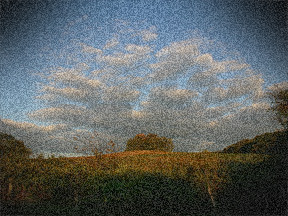
Maryville, Tennessee. Sometimes I get these inklings that turn into grand photographic romances. Like an actress falling love with a co-lead, I inevitably crush on certain subjects. John Wilkes Booth was one such example, which lead to my
Sic Semper Tyrannus series. It was not so much the legend or the man, but the history, the adventure, the idealism, and the destruction that overwhelmed my imagination.
Then there is Sam Houston. If you are not a Houston aficionado or from Tennessee, Texas may first come to mind. However, his formative years and young political adult life originated in Tennessee. I think I lumped this fellow in with the likes of Davey Crockett and Daniel Boone, but I was sorely wrong. Houston, it seems had quite the life. It included bouts of alcoholism, divorce, mystery, treachery, and somehow, through it all, the ability to rise to the top and over come.
So, is Houston my next arcane romance? I am a bit undecided. Intrigued, yes.
I am slowly plowing through
The Raven, the 1920s Pulitzer Prize-winning biography and following his footsteps.
Maryville and the schoolhouse is the first imprint of his that I have set my camera upon.


- LOCATION:
- 3650 Old Sam Houston School Road, Maryville, TN 37804
- A LITTLE HISTORY:
- The schoolhouse was built in 1794 and Henry McCulloch was the first teacher. (1)
- Sam Houston started his school here rather than taking up the family business of farming.(1)
- He did this in 1812, when he was 19 years old to pay off either a $100 (2) or a $300 (3) debt. The debt was paid off within one semester. (2)
- A child could attend this school for $8 per semester term when it was in Houston's hands. (1) He was paid one third of this in money, a third in corn and the other third in calico fabric. (2)
- In 1813, he was done being a school master. He joined the military. (3)
- This structure has also served as a church and a tenant house. (1)
- STRUCTURE:
- The schoolhouse is constructed from hewn poplar logs with a seven-foot ceiling. The desks convert from the window apertures and the seats are also made from hewn lumber. (1)
 Greenback, Tennessee. It has been a crazy, busy month. Just thought I would wish you happy winter and all that goes with it. This is indeed, a self-portrait done for the AIGA's (American Institute of Graphic Arts) Christmas card competition. Well, that is not completely true. It was one of the images I did not use on the final card but really liked. The card competition is an annual Knoxville event that raises funds for the Second Harvest Food Bank. The theme was "Give." A bit of a tricky one, that was! Four winning cards were chosen to be packaged and printed for sale. Mine was not chosen, but it was still good to be included. Knoxville has some fabulous designers.
Greenback, Tennessee. It has been a crazy, busy month. Just thought I would wish you happy winter and all that goes with it. This is indeed, a self-portrait done for the AIGA's (American Institute of Graphic Arts) Christmas card competition. Well, that is not completely true. It was one of the images I did not use on the final card but really liked. The card competition is an annual Knoxville event that raises funds for the Second Harvest Food Bank. The theme was "Give." A bit of a tricky one, that was! Four winning cards were chosen to be packaged and printed for sale. Mine was not chosen, but it was still good to be included. Knoxville has some fabulous designers.









































